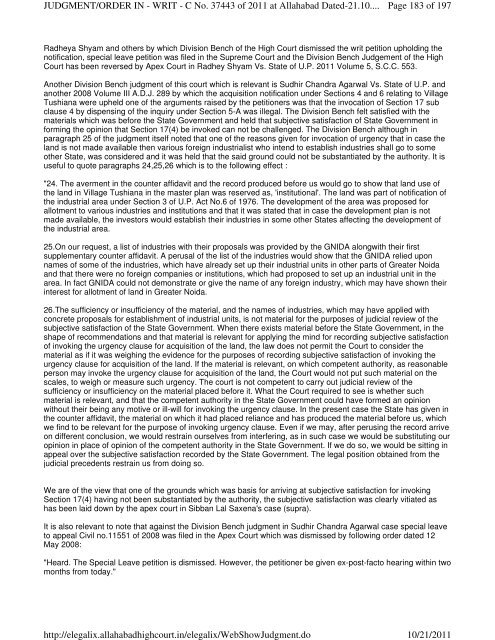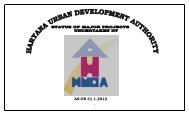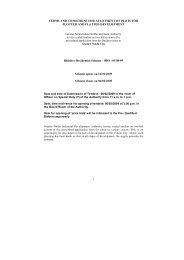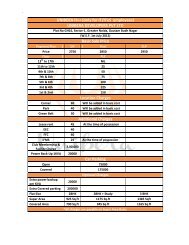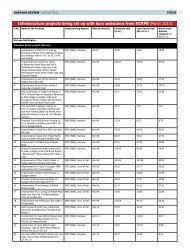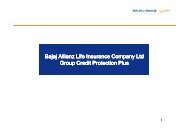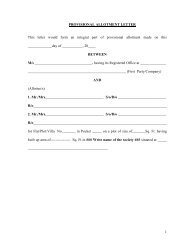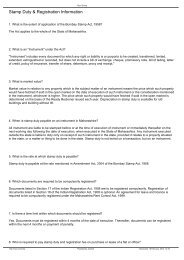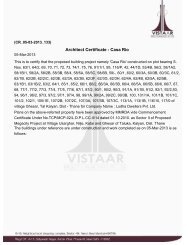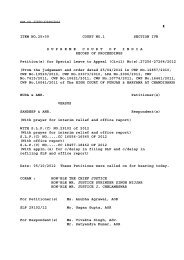eLegalix - Allahabad High Court Judgment Information System ...
eLegalix - Allahabad High Court Judgment Information System ...
eLegalix - Allahabad High Court Judgment Information System ...
Create successful ePaper yourself
Turn your PDF publications into a flip-book with our unique Google optimized e-Paper software.
JUDGMENT/ORDER IN - WRIT - C No. 37443 of 2011 at <strong>Allahabad</strong> Dated-21.10....http://elegalix.allahabadhighcourt.in/elegalix/WebShow<strong>Judgment</strong>.doPage 183 of 19710/21/2011Radheya Shyam and others by which Division Bench of the <strong>High</strong> <strong>Court</strong> dismissed the writ petition upholding thenotification, special leave petition was filed in the Supreme <strong>Court</strong> and the Division Bench Judgement of the <strong>High</strong><strong>Court</strong> has been reversed by Apex <strong>Court</strong> in Radhey Shyam Vs. State of U.P. 2011 Volume 5, S.C.C. 553.Another Division Bench judgment of this court which is relevant is Sudhir Chandra Agarwal Vs. State of U.P. andanother 2008 Volume III A.D.J. 289 by which the acquisition notification under Sections 4 and 6 relating to VillageTushiana were upheld one of the arguments raised by the petitioners was that the invocation of Section 17 subclause 4 by dispensing of the inquiry under Section 5-A was illegal. The Division Bench felt satisfied with thematerials which was before the State Government and held that subjective satisfaction of State Government informing the opinion that Section 17(4) be invoked can not be challenged. The Division Bench although inparagraph 25 of the judgment itself noted that one of the reasons given for invocation of urgency that in case theland is not made available then various foreign industrialist who intend to establish industries shall go to someother State, was considered and it was held that the said ground could not be substantiated by the authority. It isuseful to quote paragraphs 24,25,26 which is to the following effect :"24. The averment in the counter affidavit and the record produced before us would go to show that land use ofthe land in Village Tushiana in the master plan was reserved as, 'institutional'. The land was part of notification ofthe industrial area under Section 3 of U.P. Act No.6 of 1976. The development of the area was proposed forallotment to various industries and institutions and that it was stated that in case the development plan is notmade available, the investors would establish their industries in some other States affecting the development ofthe industrial area.25.On our request, a list of industries with their proposals was provided by the GNIDA alongwith their firstsupplementary counter affidavit. A perusal of the list of the industries would show that the GNIDA relied uponnames of some of the industries, which have already set up their industrial units in other parts of Greater Noidaand that there were no foreign companies or institutions, which had proposed to set up an industrial unit in thearea. In fact GNIDA could not demonstrate or give the name of any foreign industry, which may have shown theirinterest for allotment of land in Greater Noida.26.The sufficiency or insufficiency of the material, and the names of industries, which may have applied withconcrete proposals for establishment of industrial units, is not material for the purposes of judicial review of thesubjective satisfaction of the State Government. When there exists material before the State Government, in theshape of recommendations and that material is relevant for applying the mind for recording subjective satisfactionof invoking the urgency clause for acquisition of the land, the law does not permit the <strong>Court</strong> to consider thematerial as if it was weighing the evidence for the purposes of recording subjective satisfaction of invoking theurgency clause for acquisition of the land. If the material is relevant, on which competent authority, as reasonableperson may invoke the urgency clause for acquisition of the land, the <strong>Court</strong> would not put such material on thescales, to weigh or measure such urgency. The court is not competent to carry out judicial review of thesufficiency or insufficiency on the material placed before it. What the <strong>Court</strong> required to see is whether suchmaterial is relevant, and that the competent authority in the State Government could have formed an opinionwithout their being any motive or ill-will for invoking the urgency clause. In the present case the State has given inthe counter affidavit, the material on which it had placed reliance and has produced the material before us, whichwe find to be relevant for the purpose of invoking urgency clause. Even if we may, after perusing the record arriveon different conclusion, we would restrain ourselves from interfering, as in such case we would be substituting ouropinion in place of opinion of the competent authority in the State Government. If we do so, we would be sitting inappeal over the subjective satisfaction recorded by the State Government. The legal position obtained from thejudicial precedents restrain us from doing so.We are of the view that one of the grounds which was basis for arriving at subjective satisfaction for invokingSection 17(4) having not been substantiated by the authority, the subjective satisfaction was clearly vitiated ashas been laid down by the apex court in Sibban Lal Saxena's case (supra).It is also relevant to note that against the Division Bench judgment in Sudhir Chandra Agarwal case special leaveto appeal Civil no.11551 of 2008 was filed in the Apex <strong>Court</strong> which was dismissed by following order dated 12May 2008:"Heard. The Special Leave petition is dismissed. However, the petitioner be given ex-post-facto hearing within twomonths from today."


